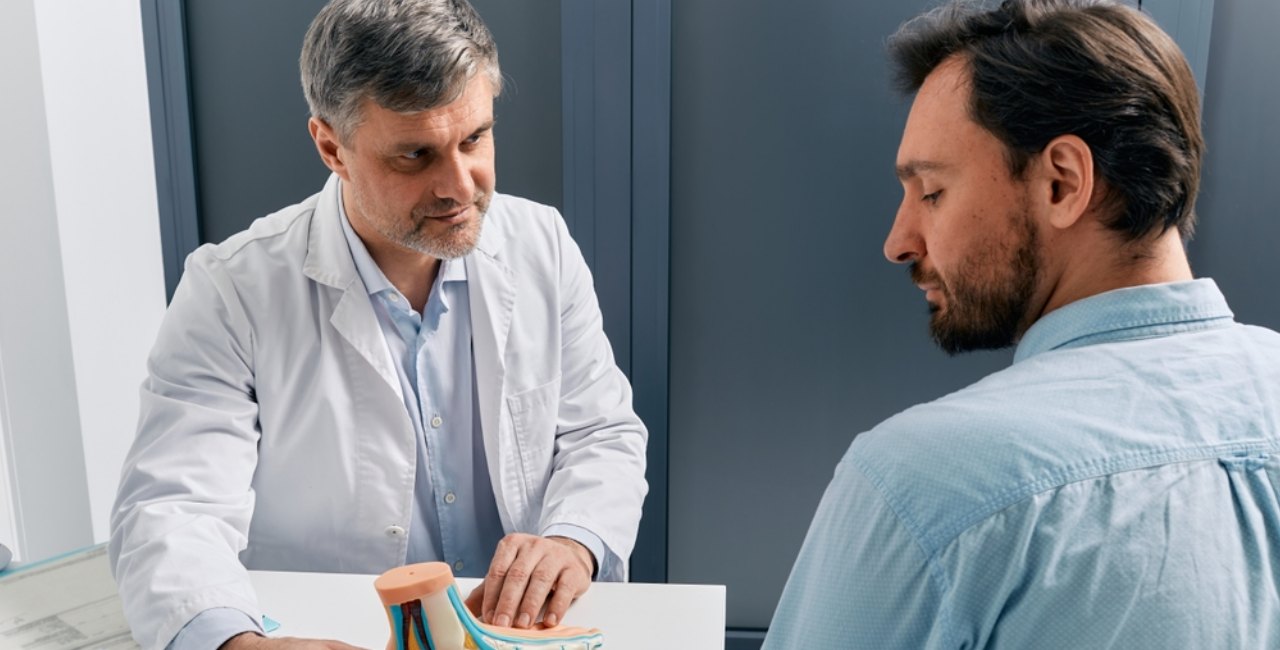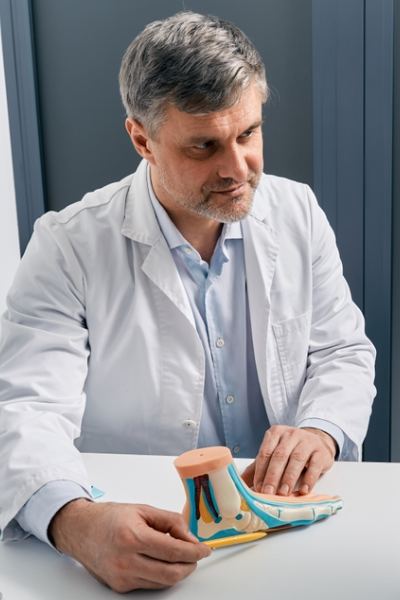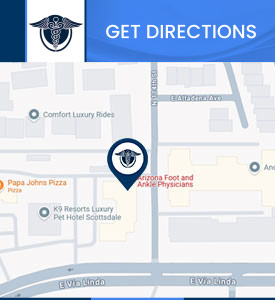Bunion Care and Treatment in Scottsdale, AZ
Dr. Nathan Plaskey at Arizona Foot and Ankle Physicians offers specialized bunion care and treatment in Scottsdale, AZ. We provide personalized treatment plans that range from non-invasive options like custom orthotics and physical therapy to advanced surgical solutions for severe cases. We understand the impact bunions can have on your daily life and are dedicated to offering effective treatments that provide long-term relief. For more information, contact us or request an appointment online. We are conveniently located at 11390 E. Via Linda, Ste 102, Scottsdale, AZ 85259.


Table of Contents:
What are the main causes of bunions, and how can they be prevented?
What are non-surgical treatments for bunions?
When is surgery necessary for bunion treatment?
How long does it take to recover from bunion surgery?
At Arizona Foot and Ankle Physicians, our experienced specialists frequently treat patients suffering from bunions, medically known as hallux valgus. Bunions are bony protrusions that develop at the base of the big toe, typically occurring when the big toe pushes against the adjacent toe, causing the joint to become enlarged and misaligned.
Several factors contribute to bunion development. Genetics plays a significant role, as some individuals inherit foot structures that make bunions more likely. Additionally, Arizona’s warm climate and active lifestyle mean that patients frequently wear sandals, flip-flops, or tight-fashion footwear, which can exacerbate bunion formation by forcing toes into unnatural positions and placing excessive pressure on the forefoot. Structural foot abnormalities, such as flat feet, excessive pronation, or loose ligaments, also predispose individuals to this condition. Arthritis and other inflammatory joint conditions can further increase risk.
We emphasize proactive prevention and early intervention strategies for bunions. Selecting footwear that provides ample space in the toe box, adequate arch support, and low heels can help decrease stress and pressure on the foot and prevent bunion development or progression. Additionally, regularly resting your feet, performing targeted foot-strengthening exercises, and using custom orthotic inserts prescribed by our podiatrists can help maintain proper alignment and alleviate strain. Maintaining a healthy body weight further reduces pressure on your feet, promoting overall foot health.
If you have a family history of bunions or have begun experiencing early signs, our specialists at Arizona Foot and Ankle Physicians recommend regular podiatric evaluations. Early diagnosis and treatment can significantly slow or even prevent bunion progression, helping you stay active and comfortable throughout all that the Arizona lifestyle has to offer.
At Arizona Foot and Ankle Physicians, we understand how bunions can cause significant discomfort and interfere with your daily activities. Our experienced podiatrists prioritize conservative, non-surgical treatments designed to relieve pain, slow the progression of bunions, and improve your quality of life.
• Footwear Recommendations
One of the simplest yet most effective methods to relieve bunion pain is selecting appropriate footwear. Our specialists recommend shoes that provide ample toe space, a wide toe box, and low heels. Comfortable shoes made with soft, flexible materials help reduce pressure and irritation, significantly easing discomfort.
• Customized Orthotics and Toe Spacers
Our podiatrists regularly prescribe custom-made orthotic devices designed to redistribute pressure, improve foot alignment, and provide optimal arch support. Custom shoe inserts or cushioned pads tailored specifically to your foot structure can significantly relieve pain by cushioning the bunion area. Additionally, toe spacers prescribed by our physicians can help realign and straighten toes, reducing discomfort and improving foot function.
• Pain Management and Anti-inflammatory Treatments
At Arizona Foot and Ankle Physicians, we utilize a variety of pain management strategies, including recommending nonsteroidal anti-inflammatory medications (NSAIDs), to reduce swelling and relieve pain. Cold therapy, like ice packs applied to the affected area, can further help control inflammation and discomfort, especially after periods of increased activity.
• Physical Therapy and Exercise Programs
We also offer customized physical therapy and exercise recommendations to maintain joint flexibility, strengthen foot muscles, and prevent joint stiffness. Specific, targeted exercises can help improve foot alignment, decrease pain, and slow the progression of bunions. Our podiatrists will guide you through these exercises and provide personalized instruction.
• Weight Management Guidance
Maintaining a healthy weight is another effective strategy for managing bunions, as it helps reduce pressure on your feet. Our physicians can advise you on weight management strategies to minimize bunion discomfort, promote overall foot health, and slow the progression of the deformity.
At Arizona Foot and Ankle Physicians, we offer comprehensive care tailored specifically to your unique needs and lifestyle. Should non-surgical treatments fail to provide sufficient relief, our foot and ankle specialists will discuss surgical options personalized to your situation.
We understand that bunion pain and deformities can significantly impact your quality of life. Our experienced podiatrists carefully evaluate each patient’s unique condition, lifestyle, and treatment goals before recommending surgical intervention.
Typically, we consider bunion surgery when conservative, nonsurgical methods do not provide sufficient relief from pain or improve functionality. Surgery often becomes necessary if persistent pain from the bunion interferes with daily activities, such as walking comfortably or finding properly fitting shoes. Additionally, if the bunion deformity continues to worsen despite conservative management, leading to secondary complications like hammertoes, calluses, or changes in gait, surgical options may be recommended.
Persistent inflammation and swelling around the bunion area, even after nonsurgical treatments, may also indicate the need for surgical correction. At Arizona Foot and Ankle Physicians, our goal is to restore your foot function, relieve discomfort, and allow you to return to your preferred lifestyle and activities.
We understand that recovery timelines following bunion surgery can vary significantly based on the specific surgical approach used, the extent of your bunion condition, and your healing characteristics. Typically, our patients report noticeable improvements within approximately six to eight weeks post-surgery. However, achieving full recovery and returning to all normal activities may require several months, with some patients continuing to see gradual improvement for up to a year.
Immediately after your procedure, our experienced podiatrists will advise you to limit weight-bearing activities on the affected foot. You may temporarily need to use crutches, specialized footwear, or protective devices designed to safeguard the surgical area. Swelling and mild discomfort are common during the first few weeks following surgery, but these symptoms will steadily decrease with proper care and adherence to your surgeon’s recommendations.
Most patients treated at Arizona Foot and Ankle Physicians can typically resume sedentary occupations and everyday activities within two to four weeks after surgery. However, if your job or lifestyle involves prolonged standing or strenuous physical activity, additional recovery time may be necessary. The transition back to regular footwear usually occurs between six weeks and three months after surgery, guided closely by your podiatrist’s detailed recommendations and your healing progress.
To optimize your recovery outcome, our specialists may recommend specific physical therapy exercises and rehabilitation protocols tailored to your needs. Carefully following postoperative instructions, maintaining regular attendance at scheduled follow-up visits at Arizona Foot and Ankle Physicians, and openly communicating any concerns or questions with your physician will significantly enhance your healing process.
At Arizona Foot and Ankle Physicians, we recognize that each patient’s recovery journey is unique. Your podiatrist will provide personalized guidance and careful monitoring throughout your recovery period, ensuring you achieve the best possible outcome based on your specific circumstances. For more information, contact us or request an appointment online. We are conveniently located at 11390 E. Via Linda, Ste 102, Scottsdale, AZ 85259. We serve patients from Scottsdale AZ, Fountain Hills AZ, Paradise Valley AZ, Carefree AZ, Rio Verde AZ, and surrounding areas.
Check Out Our 5 Star Reviews


ADDITIONAL SERVICES YOU MAY NEED
• Diabetic Foot Care
• Fungal Nails
• Heel Pain
• Bunions
• Ingrown Toenail
• Achilles Tendon
• Ankle Sprains
• Arthritis Foot
• Athlete’s Foot
• Corns And Calluses
• Crush Injury
• Flat Feet
• Geriatric Foot Care
• Hammertoes

ADDITIONAL SERVICES YOU MAY NEED
• Diabetic Foot Care
• Fungal Nails
• Heel Pain
• Bunions
• Ingrown Toenail
• Achilles Tendon
• Ankle Sprains
• Arthritis Foot
• Athlete’s Foot
• Corns And Calluses
• Crush Injury
• Flat Feet
• Geriatric Foot Care
• Hammertoes


